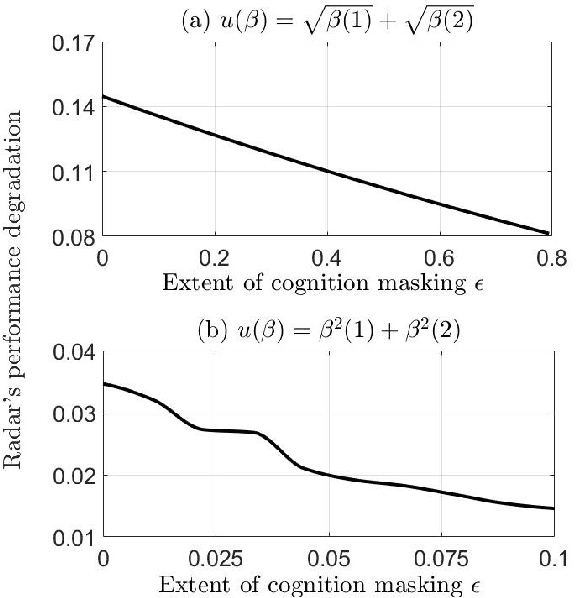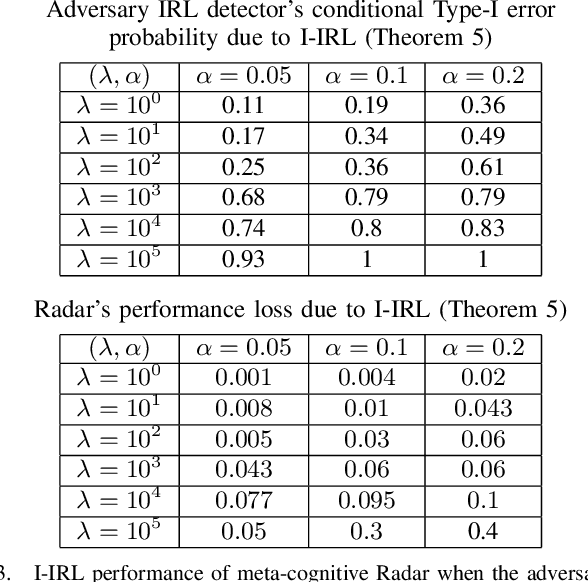Meta-Cognition. An Inverse-Inverse Reinforcement Learning Approach for Cognitive Radars
Paper and Code
May 03, 2022


This paper considers meta-cognitive radars in an adversarial setting. A cognitive radar optimally adapts its waveform (response) in response to maneuvers (probes) of a possibly adversarial moving target. A meta-cognitive radar is aware of the adversarial nature of the target and seeks to mitigate the adversarial target. How should the meta-cognitive radar choose its responses to sufficiently confuse the adversary trying to estimate the radar's utility function? This paper abstracts the radar's meta-cognition problem in terms of the spectra (eigenvalues) of the state and observation noise covariance matrices, and embeds the algebraic Riccati equation into an economics-based utility maximization setup. This adversarial target is an inverse reinforcement learner. By observing a noisy sequence of radar's responses (waveforms), the adversarial target uses a statistical hypothesis test to detect if the radar is a utility maximizer. In turn, the meta-cognitive radar deliberately chooses sub-optimal responses that increasing its Type-I error probability of the adversary's detector. We call this counter-adversarial step taken by the meta-cognitive radar as inverse inverse reinforcement learning (I-IRL). We illustrate the meta-cognition results of this paper via simple numerical examples. Our approach for meta-cognition in this paper is based on revealed preference theory in micro-economics and inspired by results in differential privacy and adversarial obfuscation in machine learning.
 Add to Chrome
Add to Chrome Add to Firefox
Add to Firefox Add to Edge
Add to Edge